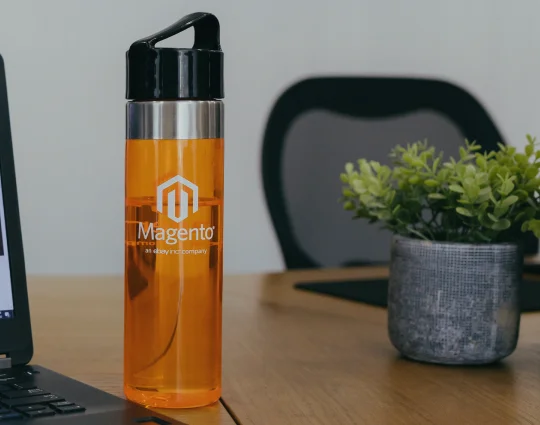Magento Accessibility Compliance in 2025
What You Need to Know

Magento Accessibility Compliance in 2025
What You Need to Know
Share post
The importance of web accessibility is undeniable. Magento, one of the leading ecommerce platforms, has significantly evolved to address these needs. Moreover, Magento accessibility compliance is now a must for any modern ecommerce website. The reason is that it is crucial not only to meet legal requirements but also to offer the best shopping experience for all visitors.
But what are the main Magento accessibility rules? Is there any universal Magento accessibility extension? In this post, you will find the answers to the following questions and much more:
Table of Contents
ToggleMagento ADA compliance means that any ecommerce Magento website must meet the accessibility standards outlined by the Americans with Disabilities Act (ADA). In other words, any online store needs to provide equal access to its goods and services for people with disabilities. This includes individuals with visual, auditory, motor, neurological, and cognitive impairments.
To put it short, your ecommerce store should be convenient and easy-to-use for different users. Following this rule requires a complex approach and a set of measures for making your service fully accessible.
So, why is Magento accessibility compliance so important? First of all, accessibility is an ethical question. All people must have equal rights and opportunities to get access to online content, including data and products, on different ecommerce stores. However, accessibility aspects go far beyond ethics.
The fact is that the number of lawsuits against websites with low accessibility is constantly growing. Thus, 4,630 web accessibility lawsuits were filed in 2023, and this number will likely grow in the upcoming years. So, in case your business fails to provide a proper digital experience, you are at risk of facing one of these accessibility lawsuits.
Furthermore, if your ecommerce store is not fully accessible, you might lose potential customers. Visitors with disabilities will not have a chance to use all of your website’s functionality and services, causing an increased bounce rate and cart abandonment. Moreover, these visitors will likely choose competitors who prioritize accessibility.
Fortunately, all these problems can be easily avoided. The World Wide Web Consortium (W3C) created the Web Content Accessibility Guidelines (WCAG), a number of standards for making web content more accessible to people with disabilities.
WCAG provides a framework for designing and developing websites that can be accessed and used by everyone, including users with diverse impairments.
Magento accessibility compliance has three levels of conformance:
If your Magento store fails to meet even Level A standards, it is better to fix these issues with the help of a professional Magento development team.
To check a website for WCAG compliance, you can use a variety of tools and techniques. Here are some widely used tools and methods:
By combining automated tools with manual testing, you can ensure a comprehensive evaluation of your website’s accessibility and address any issues to meet WCAG compliance.
How to make your Magento ecommerce website accessible? There are some key aspects of ADA compliance for Magento ecommerce stores you need to know:
By adhering to these standards, Magento merchants can make sure their sites are accessible to all users, enhancing user experience and complying with legal requirements.
Magento accessibility compliance requires a deep understanding of accessibility development principles. Even the biggest and the most reputable ecommerce websites might sometimes have design and functionality issues related to this field. So, here is a list of the most common accessibility barriers for online stores:
It is also worth mentioning that these points significantly impact your website’s performance. Therefore, it is necessary to track the customers’ behavior, analyze the received data, and regularly run Magento performance optimization.
If your website has numerous accessibility features, you can get a lot of advantages. By making your website easy-to-use for people with disabilities, you take a step forward in providing accessible goods and services. Moreover, this strategy has a positive impact on how your brand is perceived by your audience. Here is a list of advantages you will get if your online store is accessible:
Magento accessibility compliance brings your SEO scores to a higher level. The reason is that accessible websites usually have clean code, well-structured content, and descriptive alt text for all the visuals. Search engines highly rank all these parameters. Moreover, correct heading structures of your ecommerce store help them analyze your content better. Accessible Magento ecommerce websites are easier to discover and reach.
As a rule, improving Magento website accessibility leads to better user experience. The fact is that accessible ecommerce stores have more intuitive navigation, readable fonts, and proper color contrasts that attract more customers. Accessibility means every visitor can browse your ecommerce store and make purchases in a convenient and easy-to-use way. Moreover, visitors who enjoyed using your site are likely to return for future shopping.
An accessible Magento website can help you reach a wider audience. Not only millions of people with disabilities can use your online store, but also those with temporary limitations. This means you can significantly increase your potential customer base just by implementing the basic accessibility principles to your website. Expanding your reach through accessibility drives more traffic and demonstrates your commitment to offering an advanced shopping experience for everyone.
Prioritizing your website accessibility has a positive impact on your audience’s perception of your brand. Businesses that demonstrate commitment to inclusivity and high levels of social responsibility usually attract more customers. As a result, you can benefit from increased customer loyalty, positive word-of-mouth referrals, and get a better overall business reputation. All these factors help you create a more favorable and respected brand.
If you make your Magento website accessible, you will likely have higher conversion rates. An accessible online store reduces barriers that prevent visitors from making purchases. Easy navigation, clear call-to-action buttons, and accessible forms help users more easily interact with your ecommerce store. If visitors find your site easy to use, they are more likely to stay longer, engage with your content, and make a purchase. A smoother purchase path always increases sales.
Magento accessibility and ADA compliance has become a must for almost any website. However, to make sure your ecommerce website fully meets all accessibility requirements, it is better to get help from an expert Magento development team. The reason is that accessibility is not only about having a visually easy-to-use website but also about clean code, flawless navigation, and other critical technical parameters. If you decide to improve accessibility by yourself, it might be good to pay attention to the following:
One of the main questions you will likely ask when developing or optimizing your ecommerce store is, “Is my Magento website ADA compliant?” To get the answer, it is necessary to perform a detailed website audit to check whether it meets compliance standards and identify accessibility issues. This step will give you a clear vision of what features should be improved. For example, you might discover that your website has poor color contrast, missing alt text, or contains improper heading structures. For these purposes, it is better to use accessibility tools, like Siteimprove, Deque’s Axe DevTools Pro, or Tenon.io for advanced check-ups.

While automated tools are useful for identifying common accessibility issues, it is also important to check your ecommerce website manually. You can do the following:
It is crucial to pay attention to the readability of text, the clarity of form instructions, and the usability of interactive features. Manual testing will help you discover the accessibility issues automated tools can miss.
Checking the fundamental accessibility features is required for any ecommerce store. However, you will still need to encourage and accept feedback from users with disabilities. It is recommended to provide an easy way for visitors to report accessibility issues they encounter, for example, add a dedicated feedback form or contact email to your website. This approach will allow you to demonstrate a commitment to inclusivity and continually improve your website’s user experience.
Legal requirements for web accessibility include compliance with the ADA and WCAG guidelines. These standards ensure that your website is accessible to users with various disabilities.
You can customize Magento themes and templates by using semantic HTML, use proper color contrast, add alt text to images, and enable keyboard navigation. To make sure your website completely follows WCAG guidelines, it is better to consult Magento development professionals.
You can perform your website audit to identify accessibility issues and then manually check for usability problems.
Magento accessibility compliance is not just a legal obligation. It is an important step for creating an inclusive and user-friendly online store. If you have an accessible ecommerce website, you will likely provide an excellent shopping experience to all your website visitors, improve SEO scores, increase your audience’s positive brand awareness, and elevate conversion rates.
Achieving accessibility compliance usually has numerous technical complexities. Therefore, it is often better to consult a professional Magento development company. If you want to improve your website functionality and performance, make your website accessible, and check if it meets all the required standards, feel free to contact us.
Share This Article

 Mastering Magento 2 Inventory Management: Built-in Features vs Third-Party Extensions...
Mastering Magento 2 Inventory Management: Built-in Features vs Third-Party Extensions...